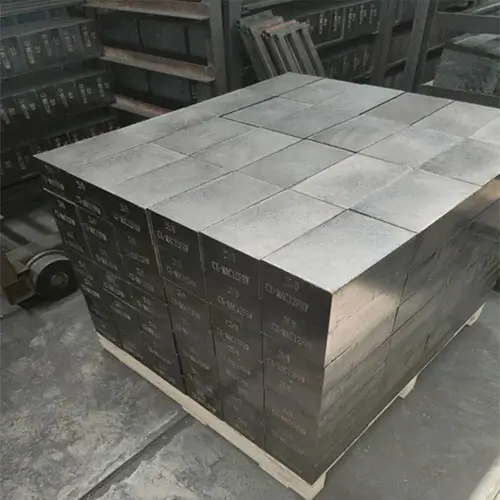Heat treatment furnaces are used to treat metals, changing the properties and organization of metals so that they have the required physical and mechanical properties. Heat treatment furnaces are one of the main equipment in the heat treatment workshop of a metallurgical factory. Due to the diversity of process requirements for the metals being treated and the differences in thermal and temperature systems, there are many types of heat treatment furnaces.
Due to different process requirements, the temperature range of heat treatment furnaces is relatively large. Generally, furnaces with a temperature higher than 650°C are called high-temperature heat treatment furnaces; furnaces with a temperature lower than 650°C are called low-temperature heat treatment furnaces. The refractory materials commonly used in masonry heat treatment furnaces are refractory clay bricks and clay insulating refractory bricks. At present, heat treatment furnaces with fully lined refractory avant-garde are already very common. Common heat treatment furnaces include chamber heat treatment furnaces, car bottom heat treatment furnaces, roller bottom heat treatment furnaces, bell heat treatment furnaces, tower continuous annealing furnaces, pit heat treatment furnaces, chain heat treatment furnaces, etc.
1.Chamber heat treatment furnace
When heat treating small and medium-sized parts with less experience, various types of chamber heat treatment furnaces can be used. Figure 1-25 shows a chamber heat treatment furnace with an area of 1.59m2, which is used for annealing and quenching of parts. The fuel is coke oven gas. There are two smoke return combustion chambers at the bottom of the furnace, each with a burner. The maximum heating temperature of the furnace is 950℃. The main masonry materials required for the furnace: clay drill 12.9t; diatomite brick 1.1t.
2.Car bottom heat treatment furnace
A car bottom heat treatment furnace with a bottom area of 12.24m2. The fuel is coke oven gas. There are two rows of burners on the two side walls, and the positions of the burners are staggered in the vertical direction. The bottom of the trolley is 2400mm wide and 5100mm long. Table 1-26 shows the main technical performance and masonry material requirements of several commonly used car bottom heat treatment furnaces.
3.Roller Hearth Heat Treatment Furnace
When heat treating steel plates and steel pipes, roller-bottom heating furnaces are usually used. Rollers are installed throughout the furnace chamber, and the heated parts are transported by the rotation of the rollers. The temperature of the roller-bottom heating furnace is relatively low, generally not exceeding 1100°C. Figure 1-27 is a roller-bottom heat treatment furnace with an area of 23.2m2. It is used to heat steel plates. The furnace is continuously produced, the fuel is coal gas, and the heating temperature of the steel plate is 700-950°C. On the walls on both sides, there is a row of burners above and below the rollers. The furnace chamber is 1856mm wide, 1250mm long, and 2077mm high.
4.Bell-type annealing furnace
The annealing of stacked steel plates and coiled strip steel is widely used in bell-type furnaces. This furnace consists of a furnace table with a boring, a movable inner cover and an outer cover. The furnace cover is generally round or rectangular. There are burners on the outer cover, and the inner lining of the outer cover is built with clay insulation refractory bricks and diatomaceous earth bricks. Clay bricks or clay-silicon carbide plates are built near the burners. Refractory fiber felt is now mostly used for the vault. The inner cover is made of heat-resistant steel plate. During annealing, the material is placed in the inner cover and a protective gas is introduced. The furnace uses sister as fuel. The flame heats the object indirectly between the inner cover and the outer cover.
5.Tower type continuous annealing furnace
The tower continuous annealing furnace is a thermal equipment for continuous production of cold-rolled strip annealing. It combines the processes of pickling, annealing, smoothing, inspection and repeated coiling of cold-rolled strips to form a continuous production line. It is characterized by high output and suitable for processing thin strips with a single variety and large output. The tower continuous annealing furnace consists of 8 furnace chambers, including preheating chamber, negative pressure chamber, heating chamber, soaking chamber, primary cooling chamber, primary aging chamber, secondary aging chamber, and secondary cooling chamber.
6.Pit-type heat treatment furnace
When heat treating metal parts such as shafts and pipes in factories, pit heat treatment furnaces are often used. The structural feature of the pit heat treatment furnace is that the furnace body is a cylindrical deep well, which is generally located below the floor level of the workshop. The workpiece is vertically loaded into the furnace by a special hanger for heating. There are multiple layers of burners on the furnace wall, which are installed in different directions, and the combustion gas rotates and flows along the furnace wall. The fuel used is usually gas or fuel oil, and the heating temperature of the workpiece is only 1000℃.
7.Chain heat treatment furnace
Chain heat treatment furnaces are widely used for heat treatment of thin plates, stacked plates and thin slabs. The heating and loading and unloading processes of this furnace are mechanized. A transmission chain is installed at the bottom of the furnace to transport the heated parts. The heating temperature of the chain heat treatment furnace is generally 1000-1050℃.
8.Drying furnace
The drying furnace is the main equipment used to remove moisture from various materials such as molding sand, sand core, refractory bricks, refractory powder, sand and stopper rods.

